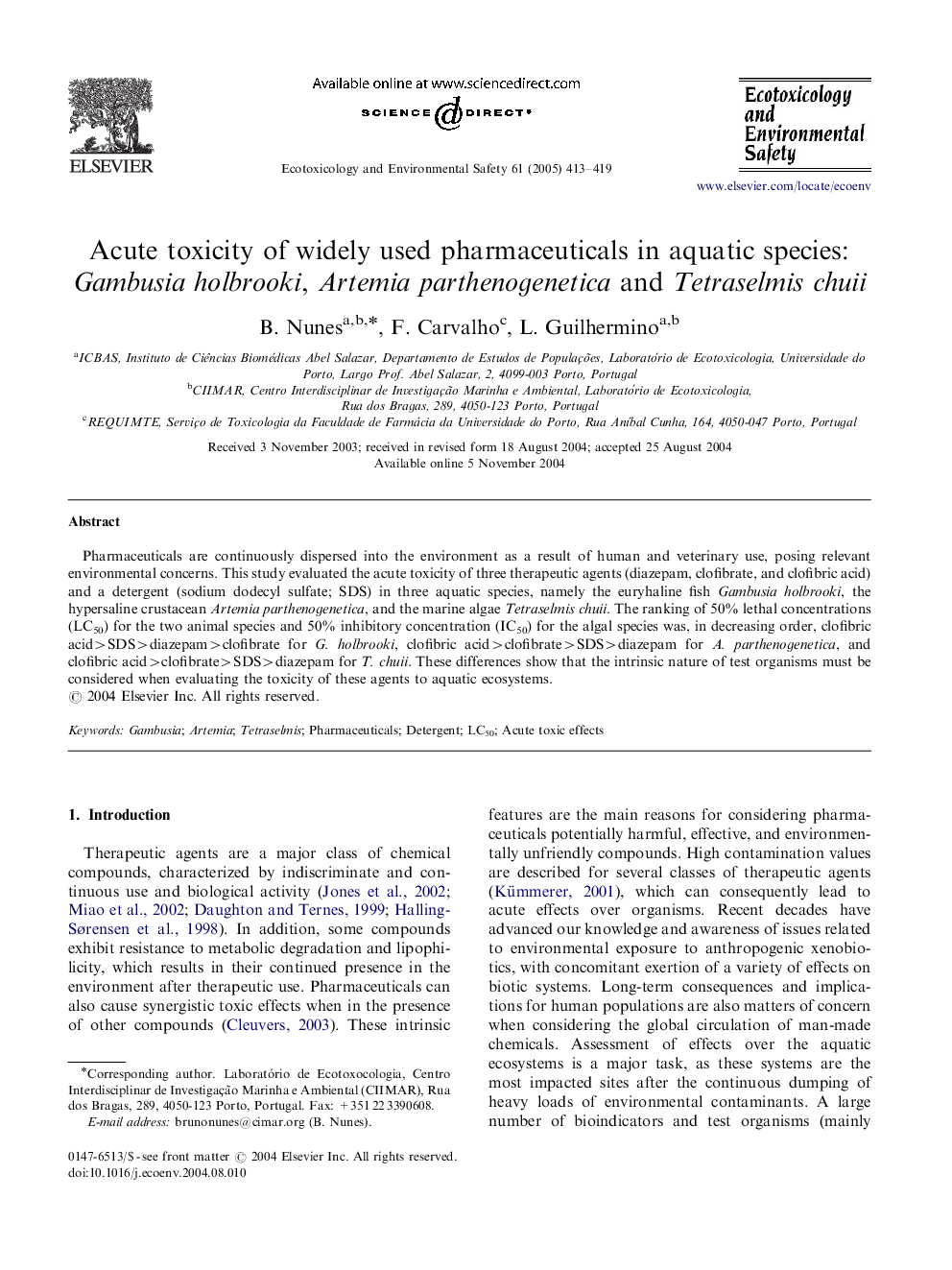| Article ID | Journal | Published Year | Pages | File Type |
|---|---|---|---|---|
| 9454745 | Ecotoxicology and Environmental Safety | 2005 | 7 Pages |
Abstract
Pharmaceuticals are continuously dispersed into the environment as a result of human and veterinary use, posing relevant environmental concerns. This study evaluated the acute toxicity of three therapeutic agents (diazepam, clofibrate, and clofibric acid) and a detergent (sodium dodecyl sulfate; SDS) in three aquatic species, namely the euryhaline fish Gambusia holbrooki, the hypersaline crustacean Artemia parthenogenetica, and the marine algae Tetraselmis chuii. The ranking of 50% lethal concentrations (LC50) for the two animal species and 50% inhibitory concentration (IC50) for the algal species was, in decreasing order, clofibric acid>SDS>diazepam>clofibrate for G. holbrooki, clofibric acid>clofibrate>SDS>diazepam for A. parthenogenetica, and clofibric acid>clofibrate>SDS>diazepam for T. chuii. These differences show that the intrinsic nature of test organisms must be considered when evaluating the toxicity of these agents to aquatic ecosystems.
Related Topics
Life Sciences
Environmental Science
Environmental Chemistry
Authors
B. Nunes, F. Carvalho, L. Guilhermino,
